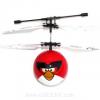- 5 replies
- 1,845 views
- Add Reply
- 1 reply
- 1,397 views
- Add Reply
- 1 reply
- 1,942 views
- Add Reply
- 1 reply
- 2,458 views
- Add Reply
- 2 replies
- 1,730 views
- Add Reply
ESRI Certification Lite

By yousef2233,
ESRI Certification was created as a one source stop for all your ESRI and GIS examination, certification, or interviewing test question needs. The application is also a resource for any students looking to obtain a GIS degree program.
This application contains over 300 ESRI test questions split up between ArcGIS Desktop and ArcSDE This application contains over 225 desktop questions.
Questions are randomly seeded every time so you get a fresh test every time. The application keeps track of
Question from IDW (inverse distance weighting)
By baz_dam,
Hi
I wanna calculate "Math Area" from IDW. How can i do that?
Arcgis "snail trail"

By intertronic,
Hello,
do anybody knows how to create a snail trail on arcmap without installing exelis?
http://www.exelisvis.com/docs/Views.html
in Search and Rescue Operations it's often good to have an overview that shows a "snail trail" by highlighting areas you have visited in a specified color.
size of MODIS NDVI pixel
By rabarth,
HI.
I took MODIS NDVI data.
My area is a small basin of 40 hectares
The resolution of one pixel is 250m. So one pixel would just cover 6.25 hectares of the basin.
It is possible to enlarge the pixel around the center location, but just in (integer) kilometers.
So the next bigger area (instead of taking just one pixel) would be 400 hectares, 10 times bigger than my study site.
Any suggestions how to solve the problem??
Boxing Day 10 years ago
By Bruce1807,
In just over 24 hours 10 years ago the world learnt of one of the largest natural disasters in modern history.
Dr. Herman Fritz, a renowned tsunami expert who I have had the honour of meeting recently wrote the following news release
http://www.ce.gatech.edu/media/news/6527
GIS is of course a huge part of the data used to help model.
Lets keep doing what we do.
To our GIS friends from Indonesia to Somalia, keep collecting data, modeling the data and most important, sharing the data
-
Forum Statistics
8.7k
Total Topics43.4k
Total Posts



